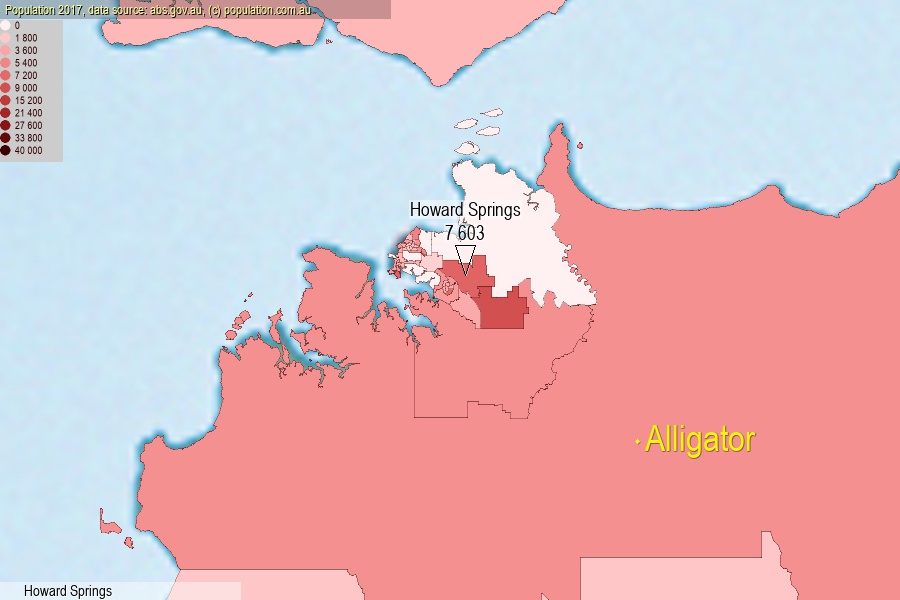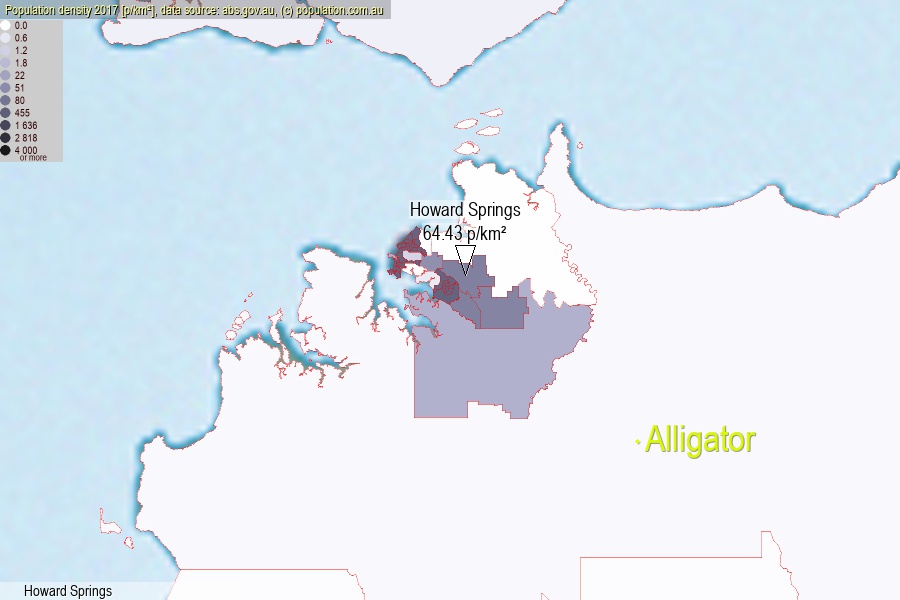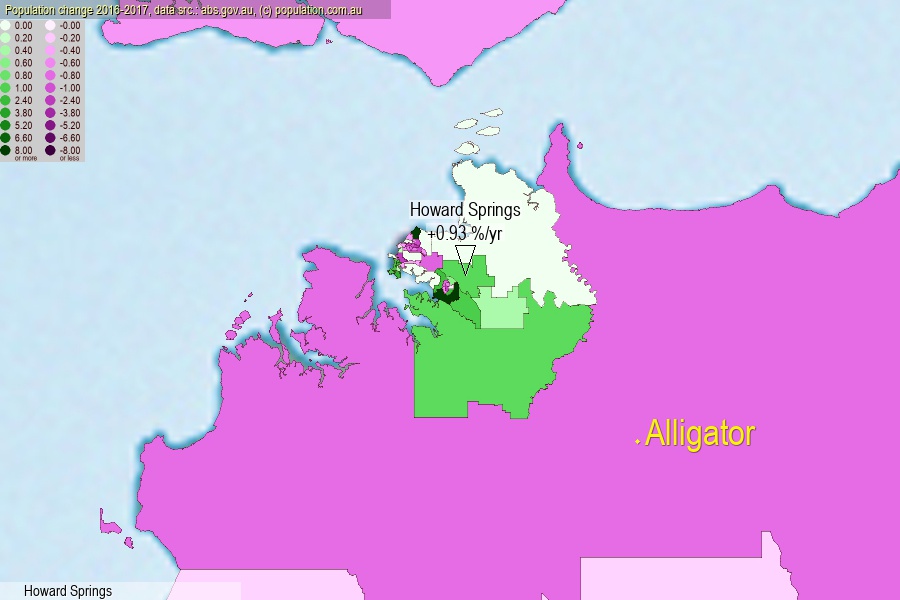 population.com.au
population.com.auLast official estimated population of Howard Springs (as Statistical Area Level 2) was 7 603 people (on 2017-06-30)[2]. This was 0.03% of total Australian population and 3.082% of NT population. Area of Howard Springs is 118.00 km², in this year population density was 64.43 p/km² . If population growth rate would be same as in period 2016-2017 (+0.93%/yr), Howard Springs population in 2025 would be 8 187. [0]



Click to enlarge. Howard Springs is located in the center of the images.
Population [people], population density [p./km²] and population change [%/year] [2]
View borders » (new window) [4]
[1991-1992] +18.65 %/Yr.
[1992-1993] +16.66 %/Yr.
[1993-1994] +12.88 %/Yr.
[1994-1995] +15.73 %/Yr.
[1995-1996] +10.41 %/Yr.
[1996-1997] +8.40 %/Yr.
[1997-1998] +3.69 %/Yr.
[1998-1999] +3.29 %/Yr.
[1999-2000] +3.37 %/Yr.
[2000-2001] +2.01 %/Yr.
[2001-2002] -1.70 %/Yr.
[2002-2003] -1.10 %/Yr.
[2003-2004] +0.27 %/Yr.
[2004-2005] -0.22 %/Yr.
[2005-2006] 0.00 %/Yr.
[2006-2007] +4.56 %/Yr.
[2007-2008] +5.64 %/Yr.
[2008-2009] +2.64 %/Yr.
[2009-2010] +0.57 %/Yr.
[2010-2011] +0.13 %/Yr.
[2011-2012] +10.07 %/Yr.
[2012-2013] +10.23 %/Yr.
[2013-2014] +6.63 %/Yr.
[2014-2015] +19.61 %/Yr.
[2015-2016] +5.21 %/Yr.
[2016-2017] +0.93 %/Yr.
[0] Calculated with linear interpolation from officially estimated population
[1] Read more about SA2 and Australian Statistical Geography Standard (ASGS) on abs.gov.au
[2] Population data from Australian Bureau of Statistics (Population and density: 2017; change: 2016-2017)
[3] Digital Boundaries: Australian Statistical Geography Standard (ASGS) 2016.
[4] Border coordinates are simplifyed using Ramer-Douglas-Peucker algorithm.